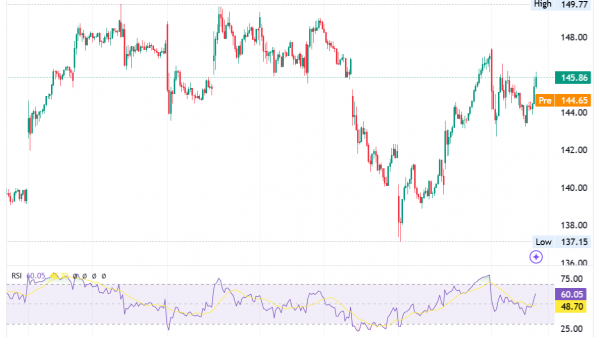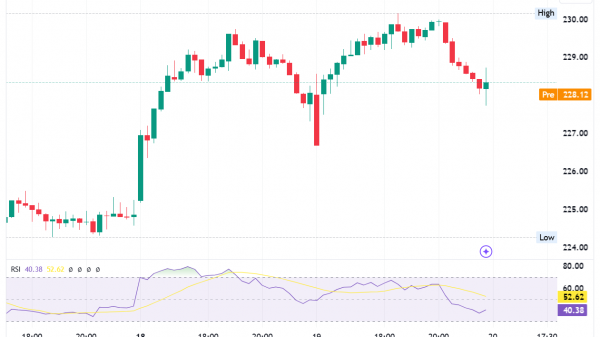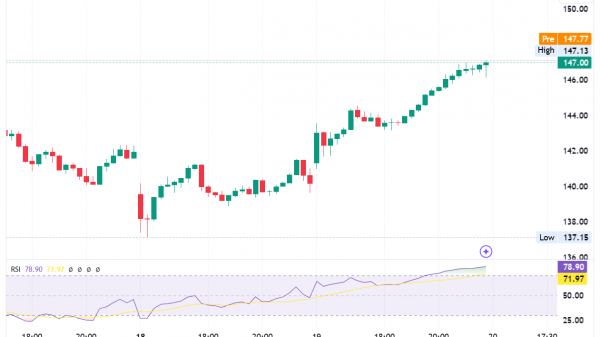There’s been a great deal of speculation surrounding Elon Musk’s satellite internet business Starlink, and for good reason. It’s been referred to by many as the future of global connectivity, offering low latency and high speed in even the most remote locations. To date, the company controls roughly 4,900 satellites and boasts over 2 million subscribers.
The idea of an impending initial public offering (IPO) for Starlink has investors understandably excited — for several reasons.
First and foremost is Musk’s reputation in the investment space. X, previously Twitter, notwithstanding, the man has been involved in multiple highly successful and high-profile tech companies. Starlink itself is an offshoot of one of his other companies, SpaceX.
Even without Musk’s involvement, Starlink has immense market potential. A lack of connectivity represents one of the most significant bugbears facing the proliferation of technology like autonomous vehicles and the internet of things. By removing this restriction, Starlink could cultivate a flood of invention and innovation and allow edge computing to well and truly thrive.
The company is now working with Greece to create one of the world’s first smart cities, and Telstra Group (ASX:TLS,OTC Pink:TTRAF) recently became one of the first service providers to offer Starlink connectivity to rural Australians. Parent company SpaceX was also recently awarded a contract by the Pentagon in the US to provide internet terminals for use in Ukraine.
In October, following the launch of its defensive war on Hamas, Israel entered into talks with SpaceX to secure to secure the use of Starlink satellites as a backup communication system.
There has been a great deal of speculation around the possibility of a Starlink IPO. Though we have yet to see an announcement in any official capacity, some experts have suggested that the IPO date may be closer than many realize. With that in mind, those considering a Starlink investment must ensure they understand the company and its technology as soon as possible.
What is satellite internet?
A satellite internet connection transmits and receives data via a network of near-Earth satellites. Though this technology isn’t new, it has evolved considerably over the past several years. At the time of its inception, it was generally only used by subscribers in remote areas who had few other options for connectivity.
The history of satellite internet traces back to 1962, with the world’s first commercial communication satellite. Known as Telstar 1, the satellite was launched by NASA in response to Russia’s successful launch of the satellite Sputnik 1. It had a short life, however; Telstar launched one day after high-altitude nuclear weapons testing, and radiation from the tests damaged electronics on the satellite. It ultimately remained operational for only seven months before it was rendered inoperable.
Interestingly, the idea of transmitting information via satellite wasn’t even new at the time of Telstar’s launch. Decades earlier, astronautics theorist Herman Potočnik first proposed the concept of geostationary orbital satellites in his 1929 book Das Problem der Befahrung des Weltraums – der Raketen-Motor, which translates to The Problem with Space Travel: the Rocket Motor. Renowned futurist Arthur C. Clarke would later cite Potočnik’s work in a 1945 paper envisioning satellite communication.
The first real use of satellite internet would not occur until the late 20th century via the Teledisc project, funded by Microsoft (NASDAQ:MSFT). First proposed in 1994, Teledisc planned to establish a network of low-orbit broadband satellites. Unfortunately, the project was rendered defunct in 2002 shortly after the failure of two similar ventures, Iridium and Globalstar.
One year later, in 2003, French satellite operator Eutelsat became the first company in the world to launch a successful satellite internet project. Since then, multiple service providers and telecommunications companies have dabbled in satellite connectivity. However, it has largely lagged behind its technological peers, primarily only seeing use in particularly isolated regions.
To explain why, we need to first explain the different types of internet. The two most common are land-based connections and cellular or mobile connections.
Landline internet uses telephone lines, coaxial cables or dedicated fiber-optic cables to send and receive data from a modem or router. This device then serves as an access point, allowing everything from computers to smart home appliances to connect to the internet. Mobile internet, meanwhile, leverages nearby cell phone towers to beam data directly to and from connected devices.
Traditional satellite internet functions as something of a fusion between mobile and landline, albeit over a vastly larger distance. It leverages a satellite dish connected to two modems. One modem is used for sending data and the other for receiving.
Historically, speed and capacity represent the two most significant drawbacks to satellite internet. Most satellite internet service providers only support speeds between 25 to 300 megabits per second (mbps). By contrast, landline fiber internet is capable of speeds up to 5 gigabits per second (gbps). Satellite internet also tends to be far costlier than a comparable landline connection, with higher latency and lower caps on data usage. It may also suffer from issues with reliability. Lastly, satellite internet may suffer from interference due to factors such as terrain or canopy coverage.
That brings us around to what makes Starlink exciting. Although not yet competitive with landline internet in terms of cost, the company offers considerably higher data caps and speeds than any other provider on the market — up to 500 mbps with a 1 terabyte cap. Starlink’s low-orbit satellites are also less vulnerable to geographic interference while offering more consistent and reliable coverage.
Does Starlink have an IPO date?
For the uninitiated, an IPO refers to the process by which a private company goes public for the first time. Typically, this involves releasing a set number of shares that can then be purchased by investors. In addition to raising equity capital for the company, these shares give investors some say in aspects of company operations, with each share generally counting for a single vote.
Increased capital is by and large the most significant advantage of going public. IPOs also facilitate easier acquisition deals via share conversions while driving awareness of the company for both investors and prospective customers. The increased transparency that accompanies an IPO may also make it easier for a business to qualify for a favorable loan.
IPOs have several drawbacks as well — chief of these is cost. Upfront expenditure aside, maintaining a public company is considerably more expensive than operating a private business. Leadership often has less control over the decision-making process post-IPO, while incautious organizations may see themselves forced to reveal trade secrets and proprietary details.
At the time of writing, Starlink is not publicly traded, and there is no concrete date for a Starlink IPO. To date, nearly everything we know about the IPO originates from several tweets made by Musk in 2021.
‘Once we can predict cash flow reasonably well, Starlink will IPO,’ Musk explained at the time. ‘(It will be) at least a few years before Starlink revenue is reasonably predictable. Going public sooner than that would be very painful.’
Musk added later that year that Starlink’s parent company SpaceX ‘needs to pass through a deep chasm of negative cashflow over the next year or so to make Starlink financially viable.’
It seems fairly clear based on Musk’s comments that we shouldn’t expect a Starlink IPO anytime soon. So why is there so much speculation that one is just around the corner?
Firstly, there’s what SpaceX President and Chief Operating Officer Gwynne Shotwell said at the 2023 Commercial Space Transportation Conference in February. While speaking about a planned testing milestone for SpaceX’s rockets, Shotwell claimed that 2023 is the year Starlink will make money. She also added that the company had a cashflow positive quarter in 2022.
There’s also SpaceX’s reported revenue for 2022 — just over US$3.3 billion, US$1 billion of which originated from Starlink.
Provided Starlink continues experiencing positive cashflow and growth, we may see an IPO as early as 2024, if not later this year. Analysts believe that once the company goes public, it could do so with a potential addressable market of US$40 billion a year. The company allegedly has the potential for up to US$30 billion in annual revenues and an overall valuation of up to US$42 billion.
These figures should be taken with a very large grain of salt. As is too often the case in technology investing, there is no shortage of hype surrounding Starlink, much of it drummed up by Musk himself. This notably includes the US$30 billion figure, which Reuters has noted would require tens of millions of subscribers.
That’s a far cry from the 2 million or so the company currently serves.
Even if those numbers are inflated, the company does show promise. Unfortunately, there isn’t much in the way of opportunity for pre-IPO investment into Starlink. To date, only a single brokerage has announced plans to gain early access to the Starlink IPO. This means that unless you’re an angel investor or a well-known venture capitalist, you’re likely out of luck.
How can you get exposure to Starlink before its IPO?
While it’s impossible to invest directly in Starlink at this time, you may be able to gain a small head start by investing in Tesla (NASDAQ:TSLA), as Musk stated he’ll ‘do his best’ to give preference to long-term Tesla shareholders.
Fortunately, you have several options if you simply want to invest in satellite internet and aren’t particularly attached to the idea of Starlink. In spite of their failed efforts in the early 2000s, both Globalstar (NYSEAMERICAN:GSAT) and Iridium Communications (NASDAQ:IRDM) are currently going strong. Iridium’s performance is especially promising, as the company had increased in value by roughly 260 percent over the past five years as of early June, although its share price did fall in Q3.
Other potential satellite internet investments include ViaSat (NASDAQ:VSAT), EchoStar (NASDAQ:SATS) and Gilat Satellite Networks (NASDAQ:GILT).
As with any investment, it’s important to do your research and speak to an accredited brokerage or investment advisor before you commit any capital.
Investor takeaway
From an investment perspective, Starlink displays incredible promise. The company’s ties to Musk, a man with an established track record of successful technology startups, has generated considerable interest out of the gate. Yet even ignoring the connection to Musk, Starlink has a massive potential addressable market thanks to ongoing demand for better connectivity and a relative dearth of viable options for edge computing.
Trends such as distributed work and the proliferation of internet of things devices will only further drive this demand.
With that said, it’s best to exercise a degree of restraint where Starlink is concerned. Although the company will very likely be a sound investment once it goes public, there is currently a great deal of exaggerated hype and speculation surrounding it. Anyone who chooses to add Starlink shares to their portfolio if the company does go public should first ensure they understand what to expect — something they cannot do by listening to hype alone.
Securities Disclosure: I, Melissa Pistilli, hold no direct investment interest in any company mentioned in this article.

































